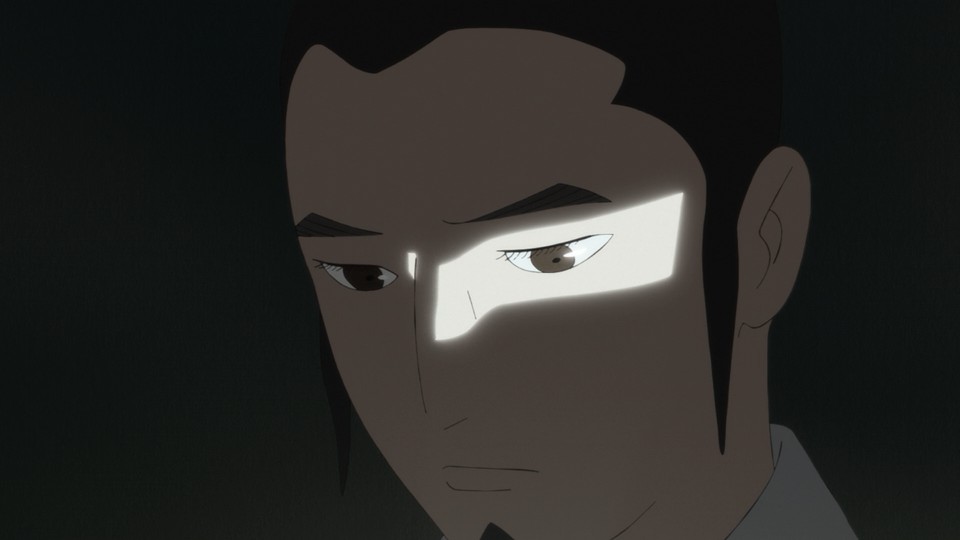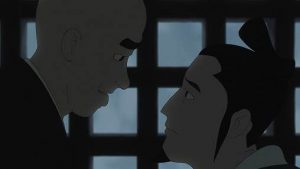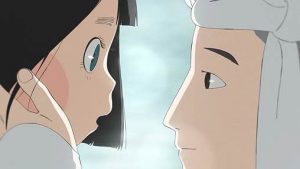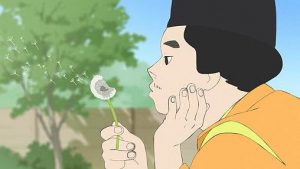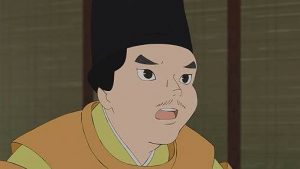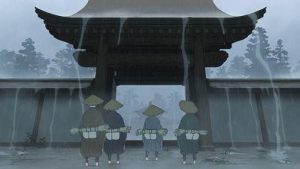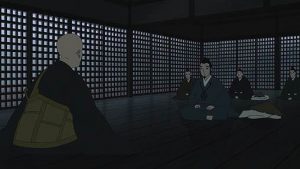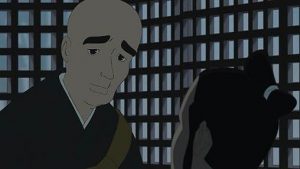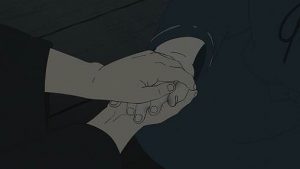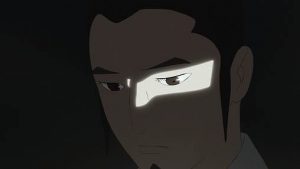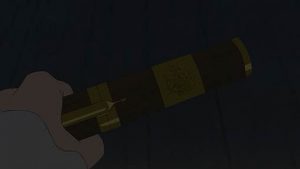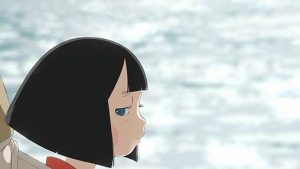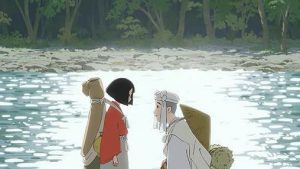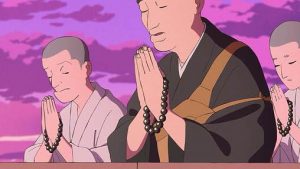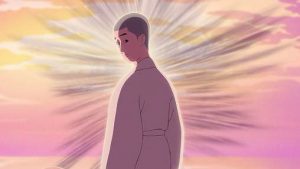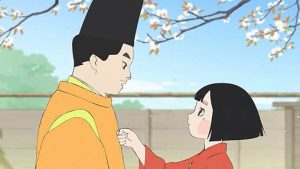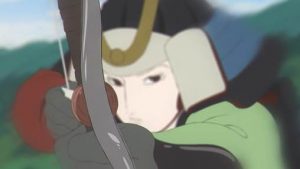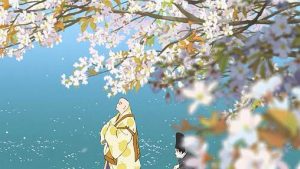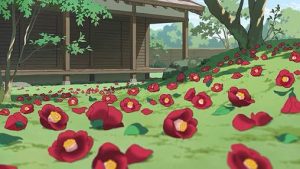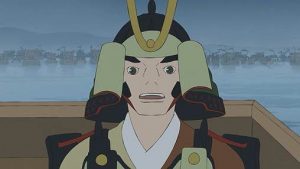 I’m always on the horns of a dilemma – well, several dilemmas – with these Heike posts. But one of them is, do I talk about the stuff that was skipped, talk about what actually happened, or just plead with readers to read the book? The subject of which translation to choose has come up a lot lately, so if you don’t read the post comments or my twitter (see link in the sidebar), I recommend the Arthur Lindsey Sadler or Helen McCullough versions if you can get them (the latter will be easier to find). Some like the Royall Tyler version (2014) but it basically tells the story in Homeric verse. Which isn’t how it was either told or written, so to me that plays as a little pretentious and forced.
I’m always on the horns of a dilemma – well, several dilemmas – with these Heike posts. But one of them is, do I talk about the stuff that was skipped, talk about what actually happened, or just plead with readers to read the book? The subject of which translation to choose has come up a lot lately, so if you don’t read the post comments or my twitter (see link in the sidebar), I recommend the Arthur Lindsey Sadler or Helen McCullough versions if you can get them (the latter will be easier to find). Some like the Royall Tyler version (2014) but it basically tells the story in Homeric verse. Which isn’t how it was either told or written, so to me that plays as a little pretentious and forced.
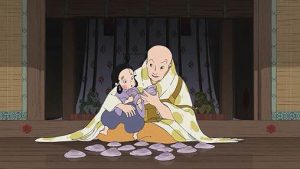 Now, as to the episode, well… It was certainly one of the best – certainly the best in the second half. It left out copious amounts of integral detail, but most of what was here was pretty on-point. Not all, sadly – the whole Biwa thing had a recurring habit of interrupting at critical moments of the narrative and derailing the emotional momentum. But for the most part it was less materially and philosophically at odds with the source material than most of the adaptation has been (low bar), so I’m thankful for small favors.
Now, as to the episode, well… It was certainly one of the best – certainly the best in the second half. It left out copious amounts of integral detail, but most of what was here was pretty on-point. Not all, sadly – the whole Biwa thing had a recurring habit of interrupting at critical moments of the narrative and derailing the emotional momentum. But for the most part it was less materially and philosophically at odds with the source material than most of the adaptation has been (low bar), so I’m thankful for small favors.
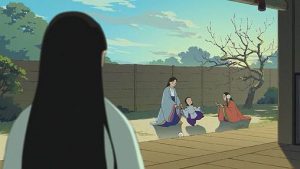 I’d be here all day if I started listing all the important stuff that was left out, but a couple things strike me as so integral that I feel duty-bound to mention them. First of all, the priest that Koremori fled to in order to become a monk (this was on Mount Koya, by the way) was Takiguchi – once known as Saito Tokiyori. He’s a major character in the book and the subject of one of Japan’s most famous il-fated love stories (there’s a temple named after him in Arashiyama, the one he fled to after his heartbreak). He was a retainer of the Heike and a friend of Koremori – thus the obvious regard he shows for him here.
I’d be here all day if I started listing all the important stuff that was left out, but a couple things strike me as so integral that I feel duty-bound to mention them. First of all, the priest that Koremori fled to in order to become a monk (this was on Mount Koya, by the way) was Takiguchi – once known as Saito Tokiyori. He’s a major character in the book and the subject of one of Japan’s most famous il-fated love stories (there’s a temple named after him in Arashiyama, the one he fled to after his heartbreak). He was a retainer of the Heike and a friend of Koremori – thus the obvious regard he shows for him here.
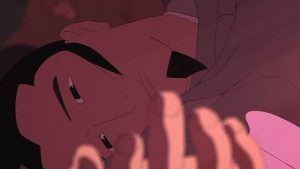 It must be said, the anime has totally re-ordered and scrambled the events concerning Koremori’s final days, and in doing so has materially changed the way he comes off as a character (i.e., they’ve turned him into a coward, which he was not). In fact he was on his way back from fleeing the Battle of Yahsima to search for his family in Kyoto, but met Takiguchi along the way and was so consumed with regret that he decided this was fate, and that he should become a monk. As for his death, the anime did portray that more of less as history does – but we only have Takiguchi’s word to go on that it actually happened that way.
It must be said, the anime has totally re-ordered and scrambled the events concerning Koremori’s final days, and in doing so has materially changed the way he comes off as a character (i.e., they’ve turned him into a coward, which he was not). In fact he was on his way back from fleeing the Battle of Yahsima to search for his family in Kyoto, but met Takiguchi along the way and was so consumed with regret that he decided this was fate, and that he should become a monk. As for his death, the anime did portray that more of less as history does – but we only have Takiguchi’s word to go on that it actually happened that way.
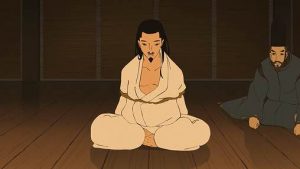 Also – the big, moustachioed guy who’s always next to Yoshitsune is Benkei. He’s another hugely important casualty of the adaptation, and of Yohitsune’s backstory being completely excised. Google him and you can read as much about him as you care to – not only is he important in the Heike, but one of the most famous men of the Heian Era (maybe the most famous who wasn’t a Heike or Genji). The Minamoto have really suffered badly in this adaptation, each in their own way – seeing Yoritomo portrayed as such a dim-witted and spineless lump is especially grating.
Also – the big, moustachioed guy who’s always next to Yoshitsune is Benkei. He’s another hugely important casualty of the adaptation, and of Yohitsune’s backstory being completely excised. Google him and you can read as much about him as you care to – not only is he important in the Heike, but one of the most famous men of the Heian Era (maybe the most famous who wasn’t a Heike or Genji). The Minamoto have really suffered badly in this adaptation, each in their own way – seeing Yoritomo portrayed as such a dim-witted and spineless lump is especially grating.
 Nevertheless, the tragedy of the Taira really comes through here, carried on the source material’s wings of glory. There was nothing redemptive about Koremori’s death and it suffered from having Biwa forced on it to try and create something, but the darkness of these days does come across pretty clearly. The Shigehira situation deserves much, much more love – but Yoritomo by all accounts genuinely agonized over his fate. Not just because his own life was spared by Kiyomori, but because he knew Shigehira to be a decent and honorable man to whom fate had dealt a terrible hand.
Nevertheless, the tragedy of the Taira really comes through here, carried on the source material’s wings of glory. There was nothing redemptive about Koremori’s death and it suffered from having Biwa forced on it to try and create something, but the darkness of these days does come across pretty clearly. The Shigehira situation deserves much, much more love – but Yoritomo by all accounts genuinely agonized over his fate. Not just because his own life was spared by Kiyomori, but because he knew Shigehira to be a decent and honorable man to whom fate had dealt a terrible hand.
 The rubber really meets the road next week, because for me the best (and most heartbreaking) moments of the story are still to come. I’ve been skeptical that the anime was going to depict them even in passing and still am, but there were a few hints that could be interpreted as suggesting it will. We shall see – if nothing else, there are probably a few more people talking about the book than there were three months ago. That’s a positive – as long as some of them actually go out and read it.
The rubber really meets the road next week, because for me the best (and most heartbreaking) moments of the story are still to come. I’ve been skeptical that the anime was going to depict them even in passing and still am, but there were a few hints that could be interpreted as suggesting it will. We shall see – if nothing else, there are probably a few more people talking about the book than there were three months ago. That’s a positive – as long as some of them actually go out and read it.


